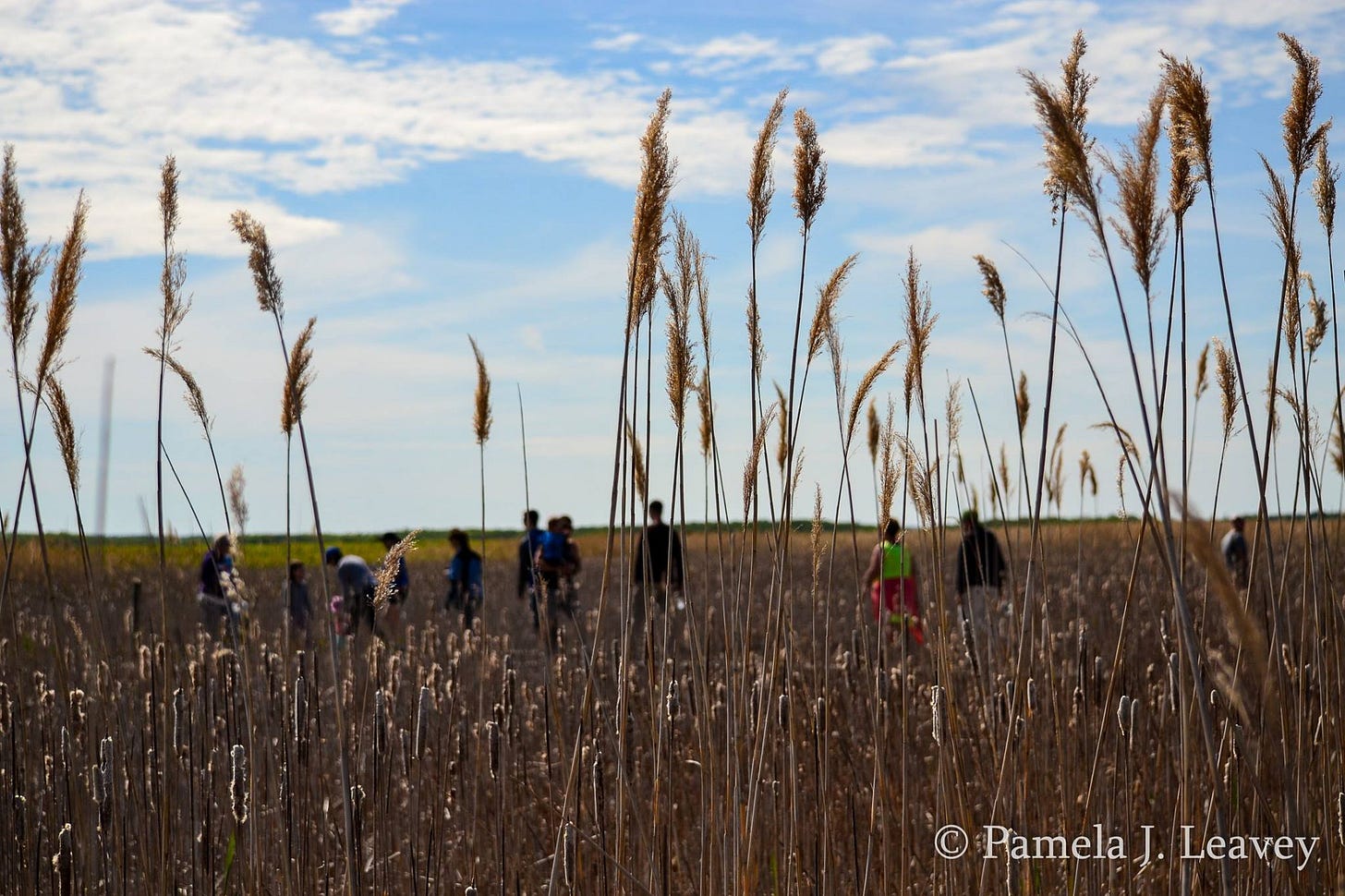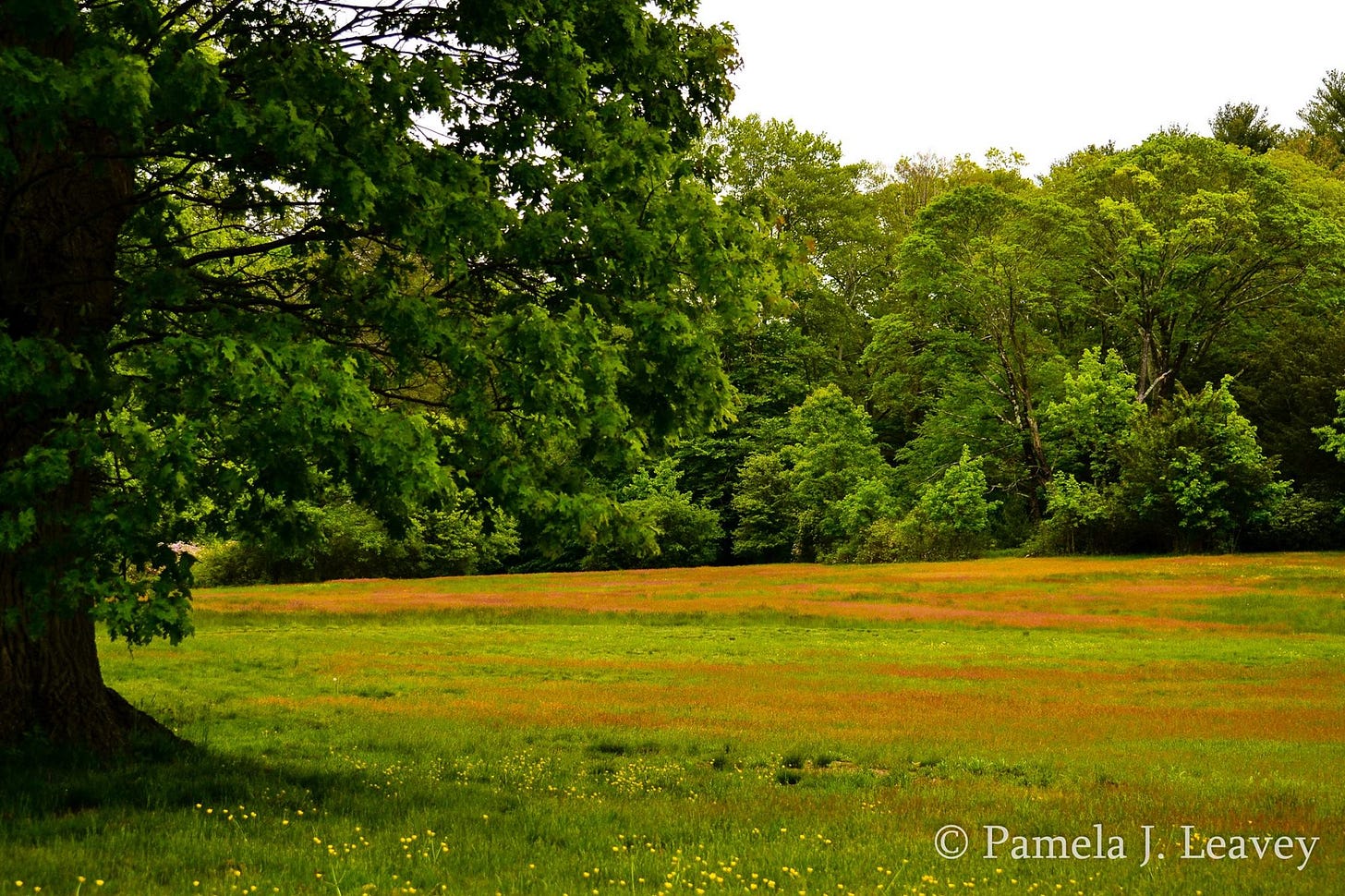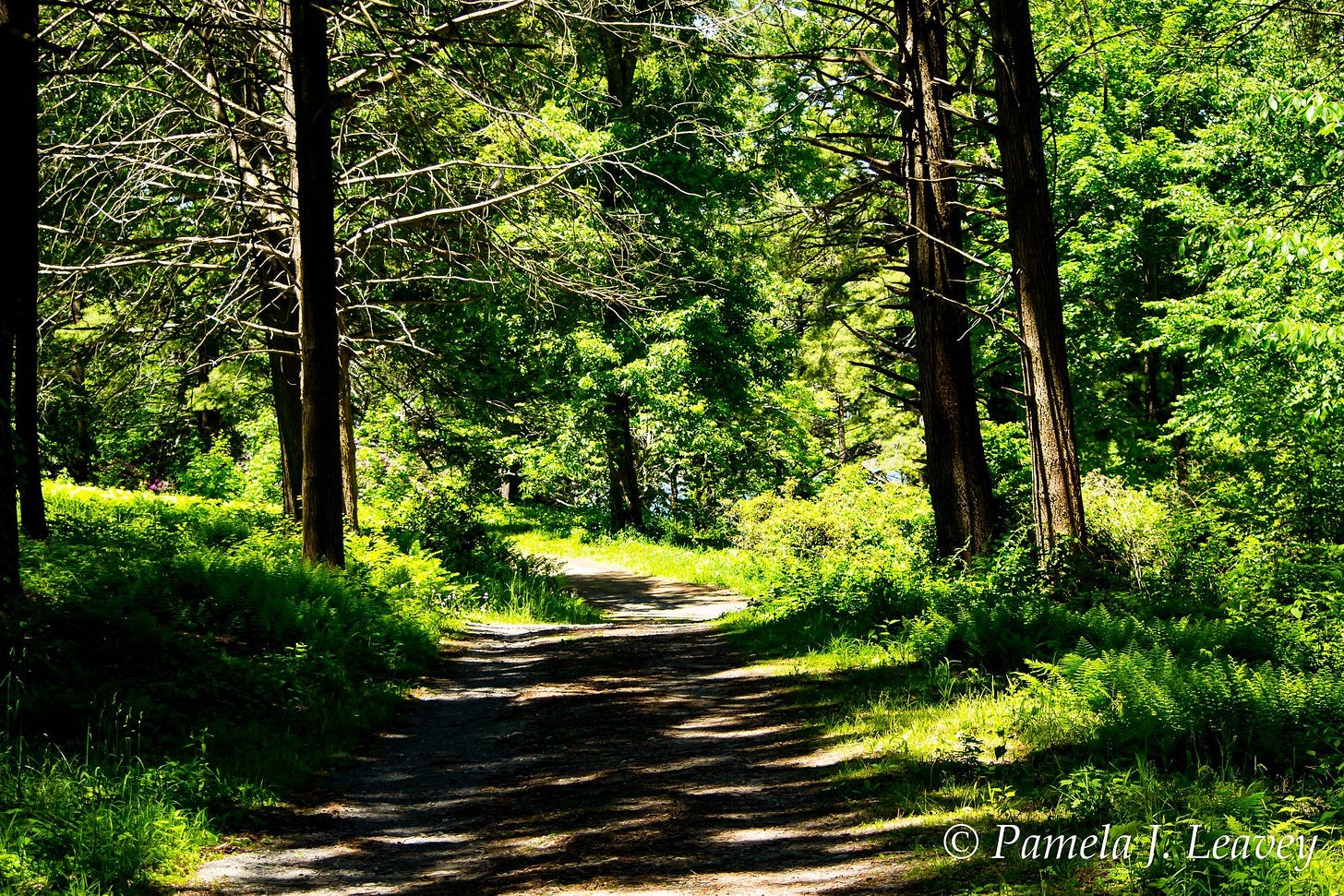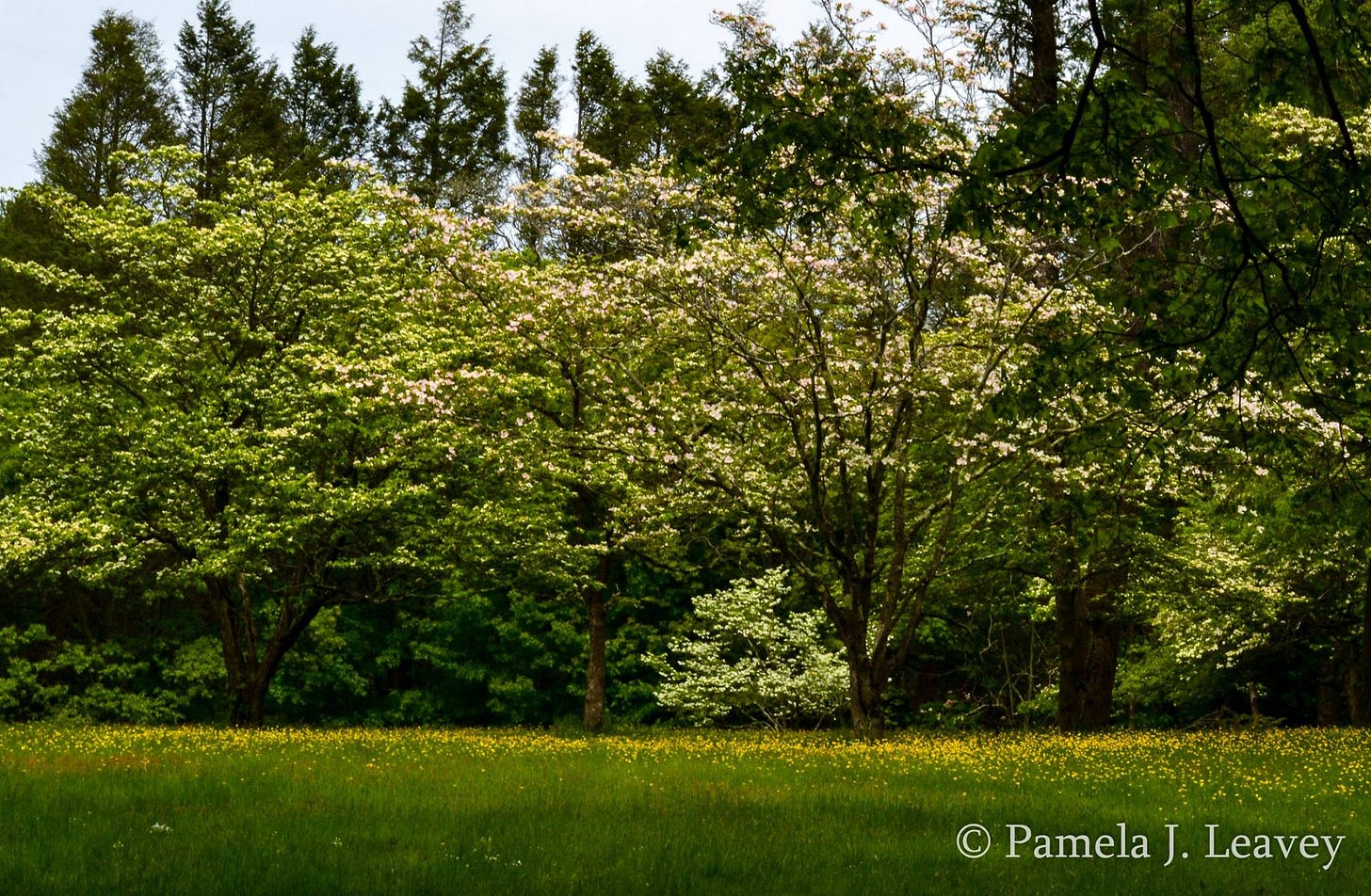Exploring the intersection of life and literature to understand how our life experiences influence what we read and how what we read influences our lives.
This article is a collaborative effort between
and me. The amazing photography is all hers while I provide the simple words. I am grateful she was open to collaborating and you can see more of her amazing photos and experience some of her writing at .“The poetry of the earth is never dead.” –John Keats
In childhood, I danced to life’s cadence as a barefoot adventurer through nature’s creation. The dewdrops reflecting sunlight on each blade of grass, tree branches dancing to the rhythm of the breeze, and birds and bees vocalizing nature’s symphonic harmony taught me each thing has its place, a unique part of the whole. This oneness with the world formed an essential relationship with every living thing from which humanity has long drawn energy and rejuvenation.
My mind was battered by a storm of personal and familial trauma throughout my teenage years. In need of refuge, I found solace in communing with the natural world when I wasn't escaping into books. Long walks in the fields and woods around our home enabled me to maintain a connection with nature, providing much-needed solitude and rest for my mind when life’s challenges overwhelmed me.
My kinship with the outdoors diminished when other relationships and responsibilities took precedence over the years. Negligence and the passage of time allowed this vital energy source to fade until nothing but an echo remained. In this remnant, I experienced brief moments of respite when staring into the starry sky or meandering among the hills and trails.
"What is the good of your stars and trees, your sunrise and the wind, if they do not enter into our daily lives?" –E.M. Forster
The early years of the 21st century saw the world inundated with technological advances, typically met with enthusiasm, focused on making life easier, faster, and more connected. Medical technology advancements improved healthcare, higher quality of life, and greater lifespan. Workplace technology improvements allowed task automation and boosted productivity. Personal computers and smart tech were present in nearly every home and school, giving us instant access to information. Geographical boundaries were overcome as the world shrank due to the internet, social media, and the ever-present smartphone.
While the benefits of technology cannot be denied, we must acknowledge they have come at a high cost, especially in our relationships with others and the world around us. The average person spends 6.5 hours daily looking at a screen outside of work-related activities.1 Most of that time is spent on social media platforms, with TikTok and Instagram leading the pack. Connecting to the fastest wifi signal or the 5G network is a primary social concern. Do we have the fastest computer? Is our phone the latest model? Our obsession with doing everything quickly while constantly being connected to our devices has ensured we have little time to connect with the most important relationships.
What is the impact on our lives? Our physical health has deteriorated as we rely increasingly on devices to do our jobs and provide entertainment. Sedentary lifestyles lead to dangerously high rates of obesity, further leading to significant health risks such as heart disease and diabetes. Of substantial concern are the social and mental health impacts resulting from social isolation and reduced interpersonal skills. According to a recent U.S. Surgeon General’s report, we are experiencing some of the highest rates of loneliness and isolation in history,2 while more than 21 million US adults suffer from depression.3 Technology has opened doors to serious addiction risks, ethical dilemmas, and privacy concerns while reducing our self-reliance and damaging the environment through pollution.
Our minds and bodies are in revolt, starving for genuine connection. We are hungry for authentic relationships with others and a revitalization of our connection with the earth. Historians may argue the merits of correlation and causation, but the truth is right before our eyes. Technology is a tool; like any tool, it can be used for good or bad. We are the ones who get to make that decision. So, what is to be done?
"In every walk with nature one receives far more than he seeks." –John Muir
We need a cultural awakening to the essential importance of relationships in our lives. Relationships with others and with the natural world. While most recognize the need to connect with the people around us, recognizing the need for a relationship with the natural world may not be as intuitive. We must make a concerted effort to reestablish the connectedness with nature that provides strength and healing, a fact of life our ancestors knew well. How do we go about this when we live a technology-driven lifestyle that does not function well in the unconnected environment of nature?
To begin, there must be an acknowledgment, on an individual and cultural level, that a problem exists. This is starting to happen as there is significant conversation among health professionals, scientists, and environmental advocates regarding nature’s healing and restorative power. Why should this come as a surprise when indigenous cultures have understood the connection to the earth for centuries as a physical grounding and a source of spiritual energy?
Excellent literature exists to educate the uninitiated or assist the out-of-practice in finding their way back to a connected place. Below, I share a list of superb literature related to this topic.
· Wilderness Essays by John Muir
· Walden by Henry David Thoreau
· Losing Eden: Why Our Minds Need the Wild by Lucy Jones
· Braiding Sweetgrass by Robin Wall Kimmerer
· Devotions: The Selected Poems by Mary Oliver
· Wildwood by Roger Deakin
· Nature Cure by Richard Mabey
· The Overstory by Richard Powers
After education comes action, meaning we need to get outdoors. This can be working in our garden or starting one. It could be walking on a local nature trail or meandering through the woods. Since the 1980s, the Japanese have advocated participation in Shinrin-Yoku or “forest bathing.” This ecotherapy was initially developed to assist workers in the tech industry in avoiding burnout and reestablishing a relationship with Japan’s national forests. As scientists, led by Dr. Qing Li, a physician and immunologist, studied the physiological benefits, they realized the far-ranging positive impacts. Those who regularly spent time in the forest had reduced blood pressure, lower stress levels, and boosts in their energy levels and immune systems.4 Dr. Li’s findings and guidance are documented in his influential work, Shinrin-Yoku: The Art and Science of Forest Bathing.
“Those who contemplate the beauty of the earth find reserves of strength that will endure as long as life lasts. There is something infinitely healing in the repeated refrains of nature -- the assurance that dawn comes after night, and spring after winter." - Rachel Carson, Silent Spring
Rachel Carson got it right when her words were first published in 1962, finding ever more relevance with each passing year. Each of us must embrace this message to recognize the inestimable value of a relationship with the natural world and dedicate ourselves to reestablishing that connection to find the strength and healing we need in our lives.
Until next time…
Recently, I enjoyed reading:
- - Let Nature Be Your Teacher
- - Social Media has made harassment acceptable
- and - The Hollow Boys, and Girls: Restoring Risk, Efficacy, and the Small Triumphs of Life
https://www.comparitech.com/tv-streaming/screen-time-statistics/
https://www.hhs.gov/sites/default/files/surgeon-general-social-connection-advisory.pdf
https://www.mhanational.org/conditions/depression#:~:text=Major%20depression%20is%20one%20of,are%20affected%20by%20major%20depression.
https://www.nationalgeographic.com/travel/article/forest-bathing-nature-walk-health








I also grew up in the woods and I feel most at home there. For Lent I’ve decided to forest bathe every day. I feel myself settled and calm every time. It’s a gift I want ti give my kids too—because if we don’t know the value of the natural world, how will we save it?
During the pandemic, when all my access to theatres and restaurants and museums and travel and so on was shut down, I rechanneled that energy into exploring all the arboretums, gardens, nature preserves, historic houses that at least had nice grounds open, etc within a couple hour drive of me. It was glorious! Being around bright natural colors, in sunlight, etc had a huge positive effect on me in that time and I think there have been studies of people in low income housing showing even looking at a small patch of grass for a few minutes a day improves well-being compared to not looking at anything natural. It’s harder for me now that I’m in an urban area and don’t own a car. I go for walks often, but immersion in nature is harder to access and I miss it.